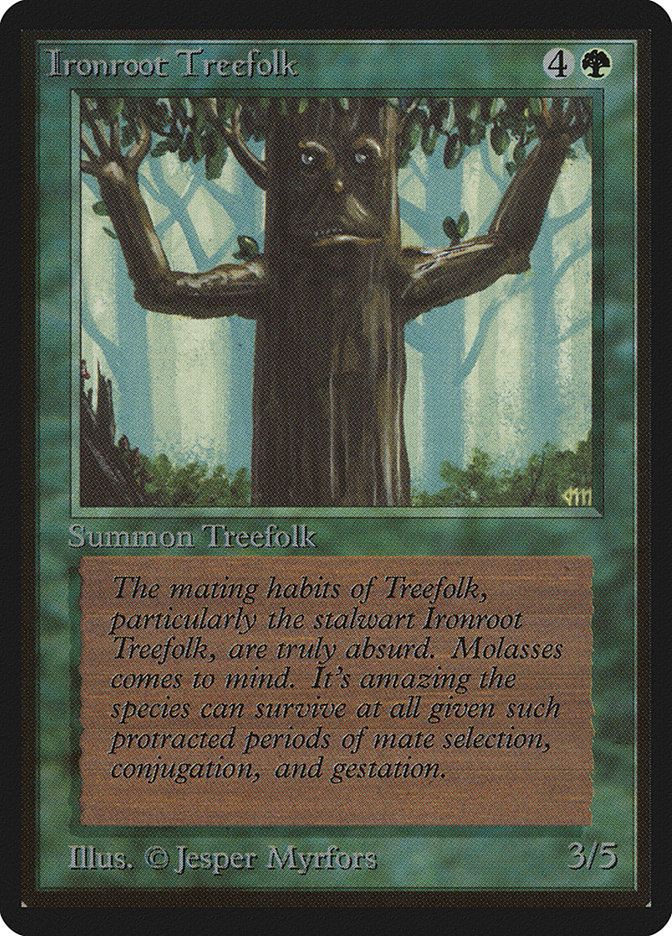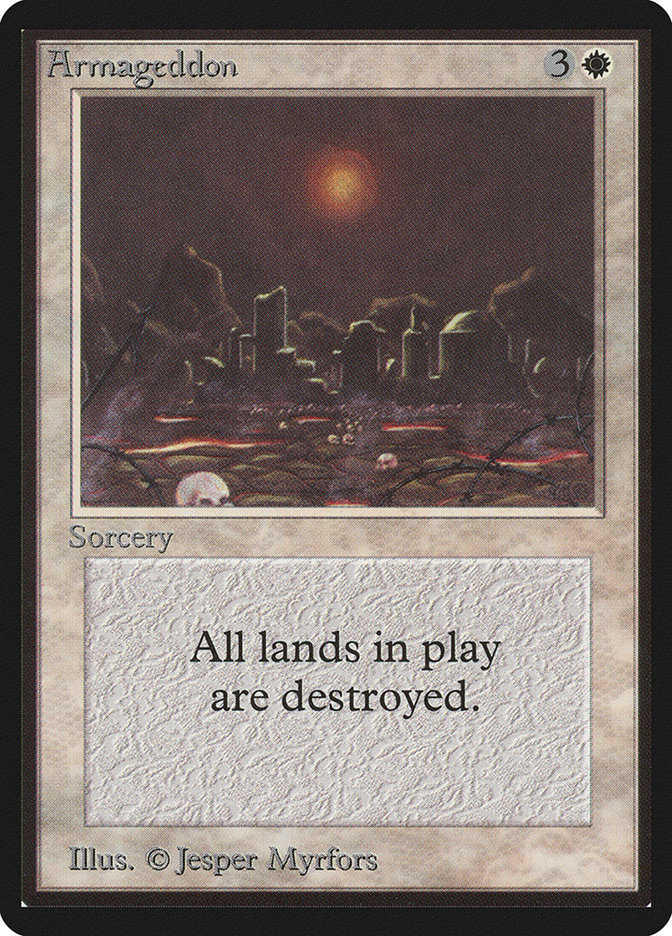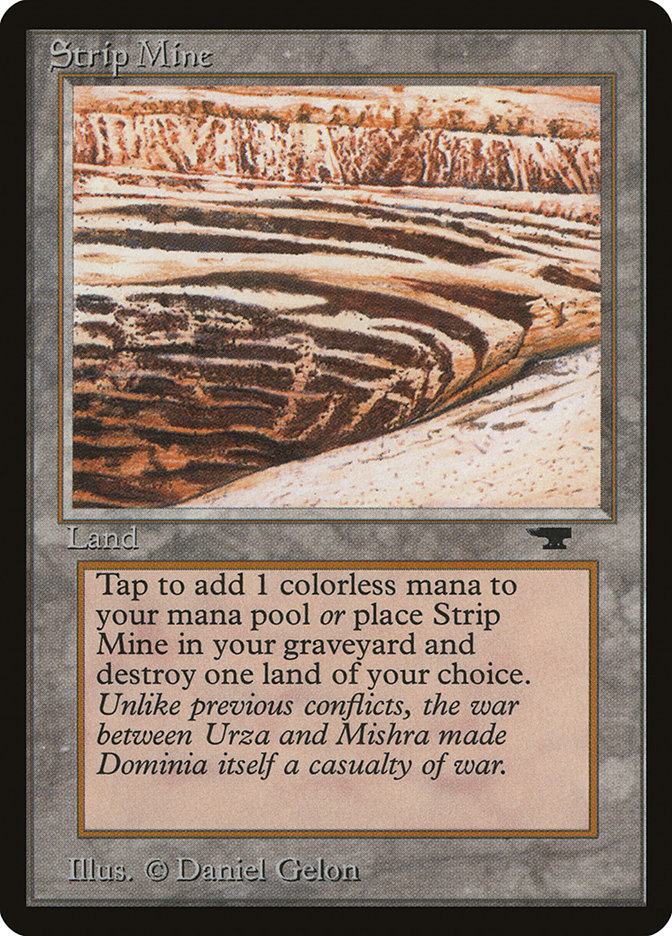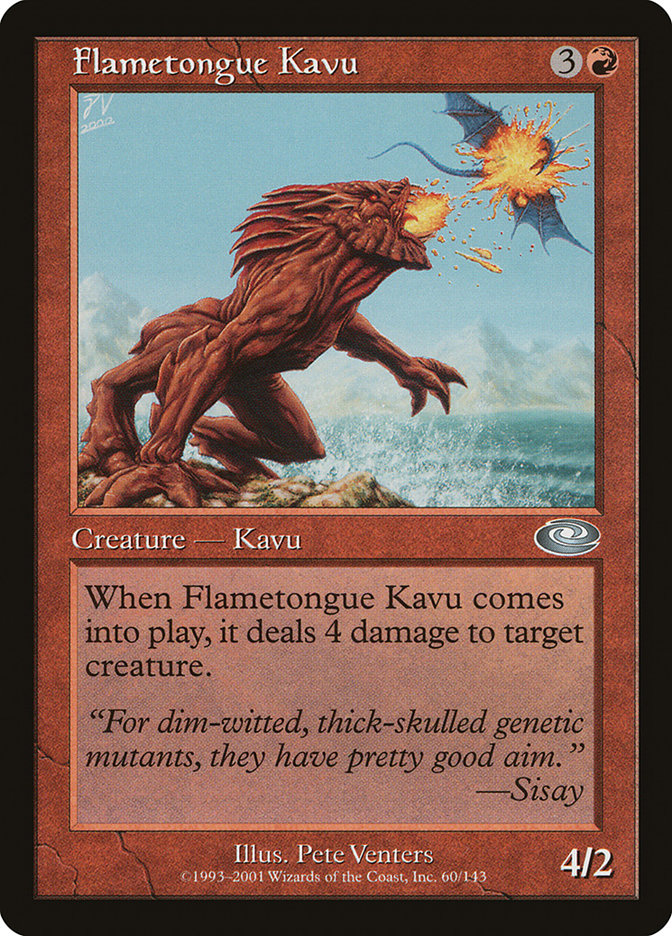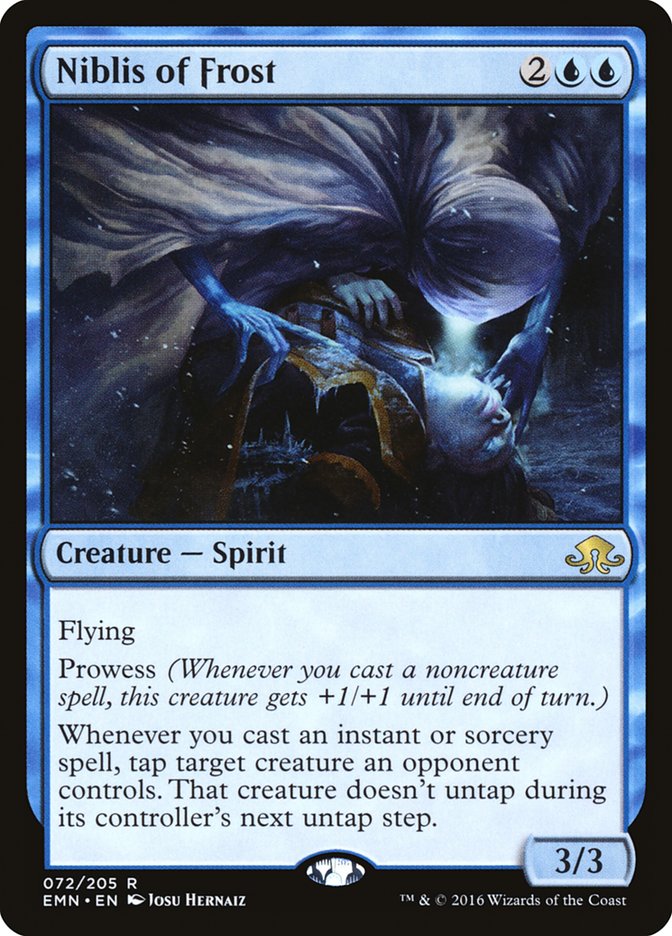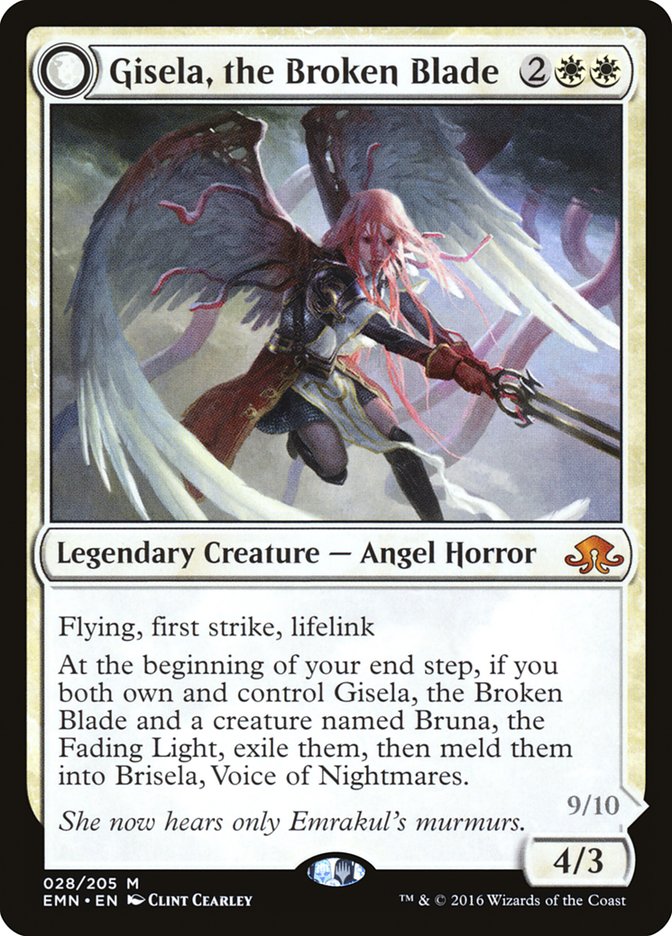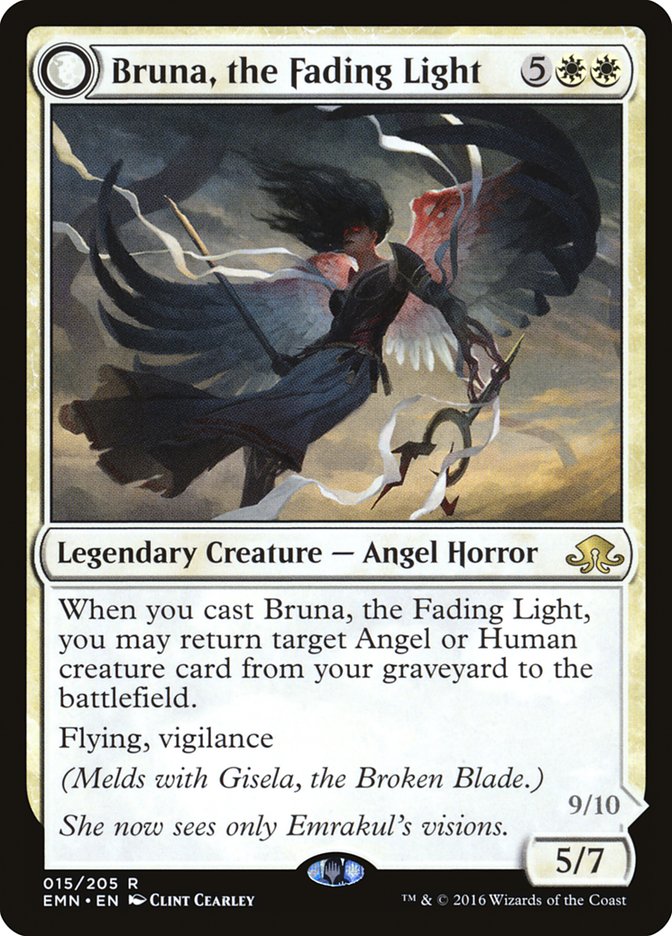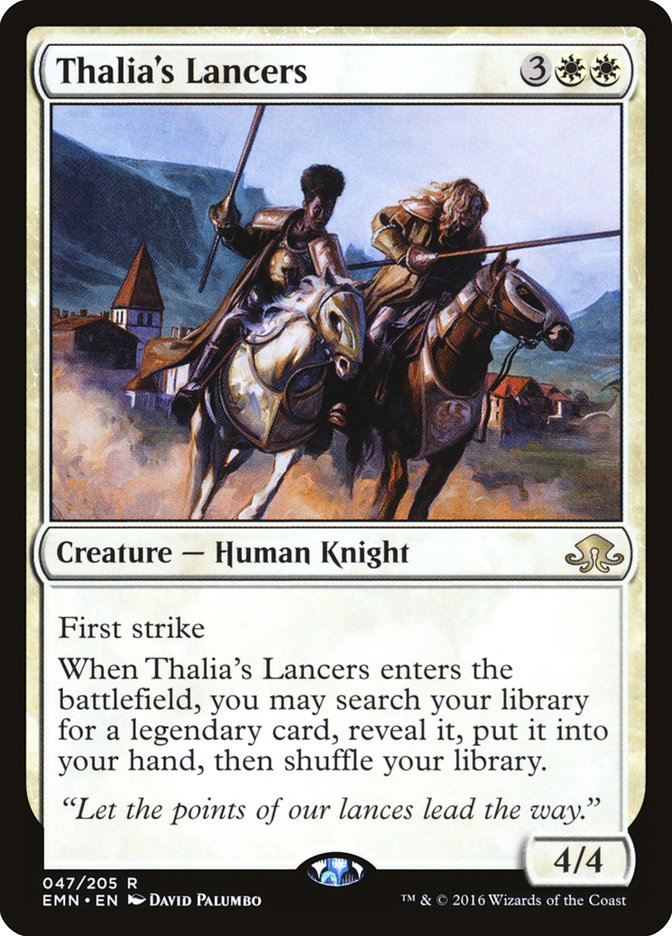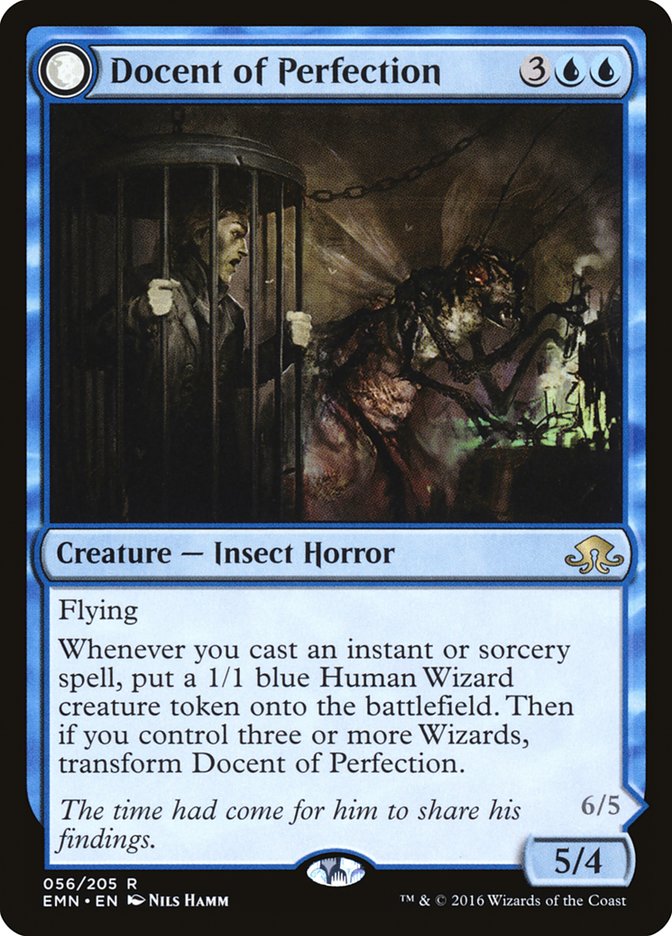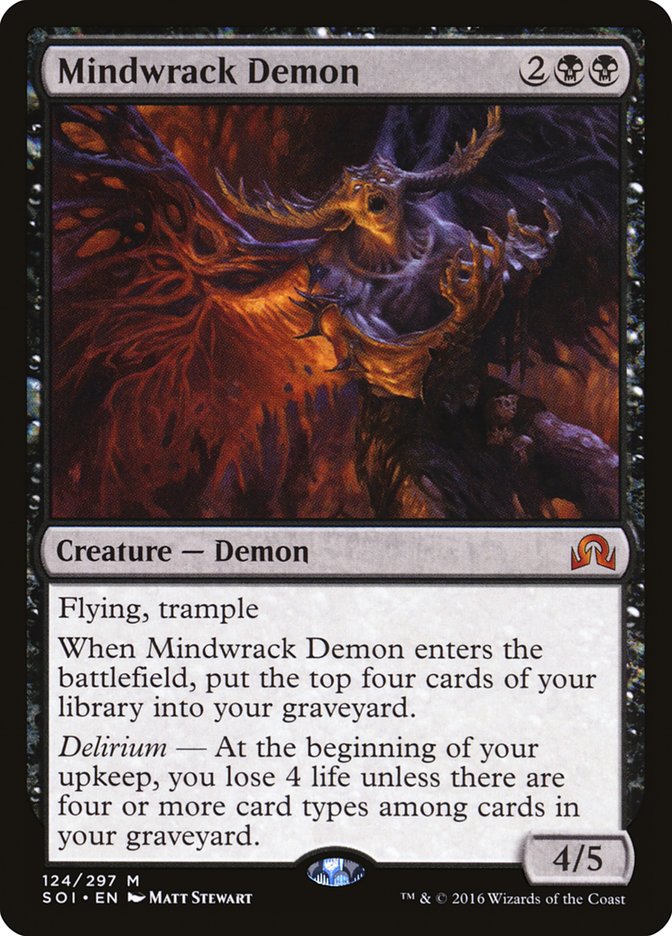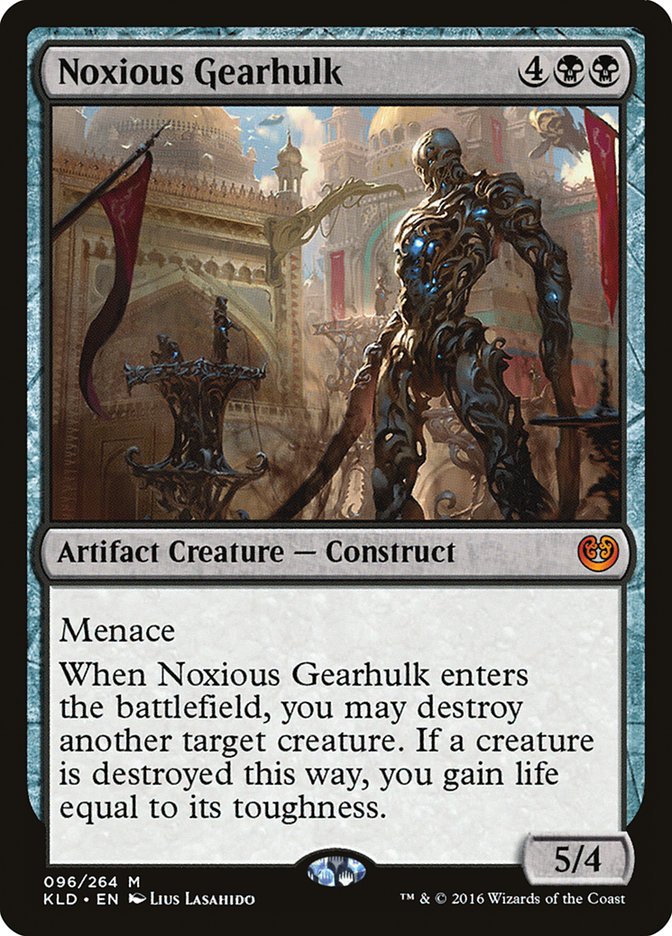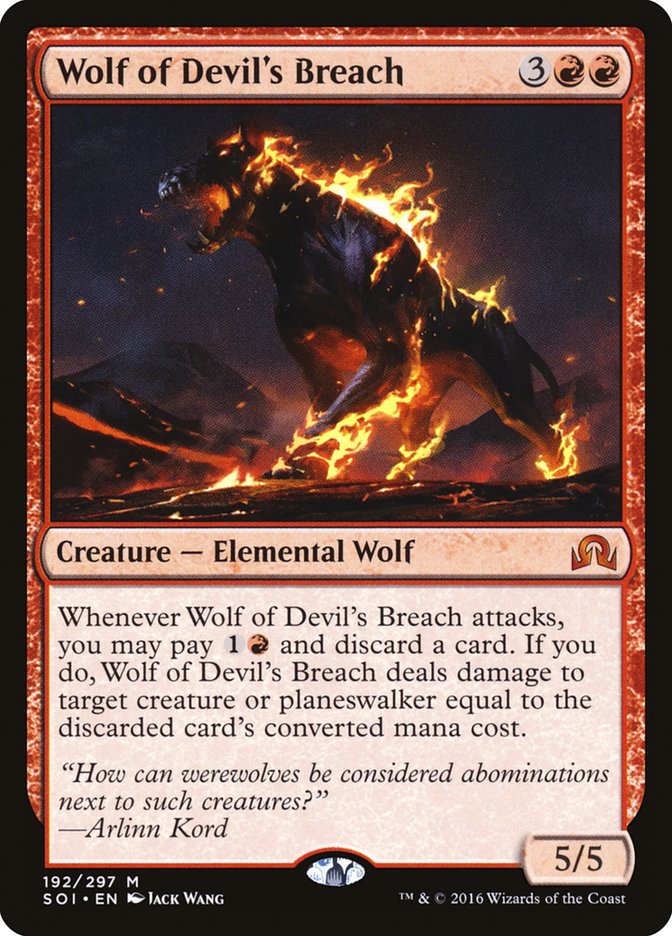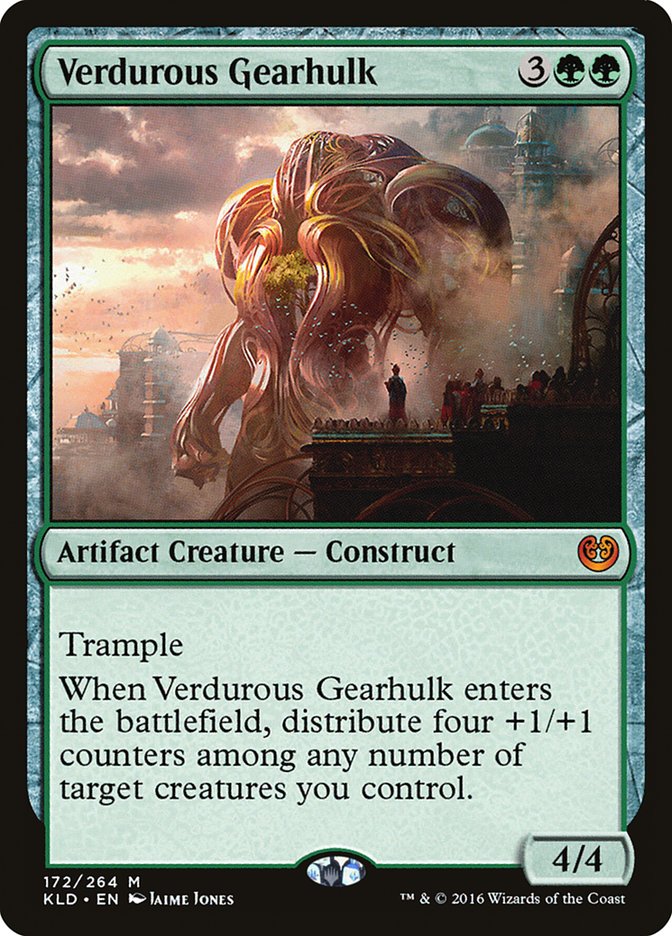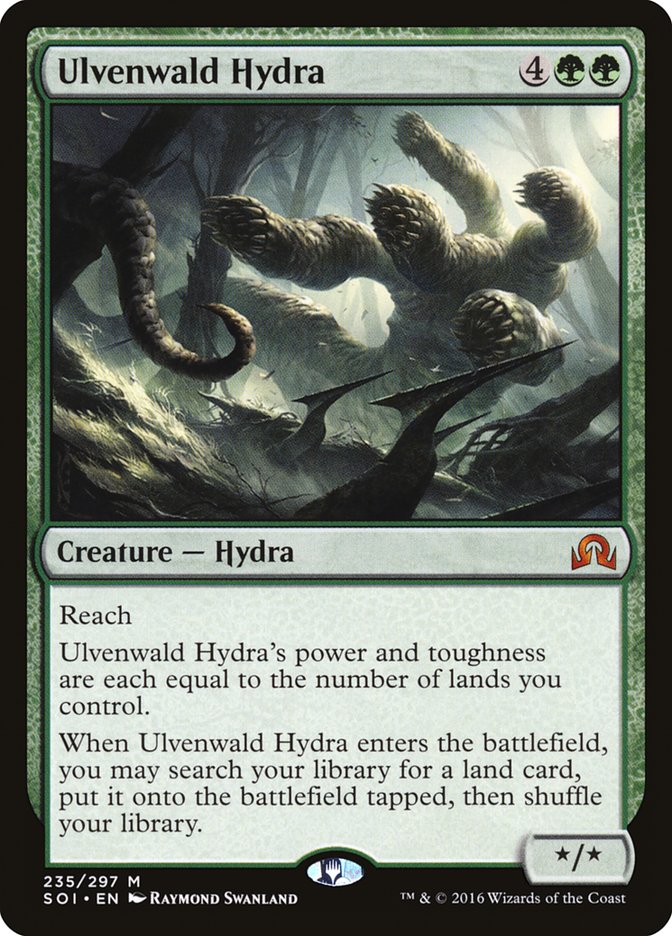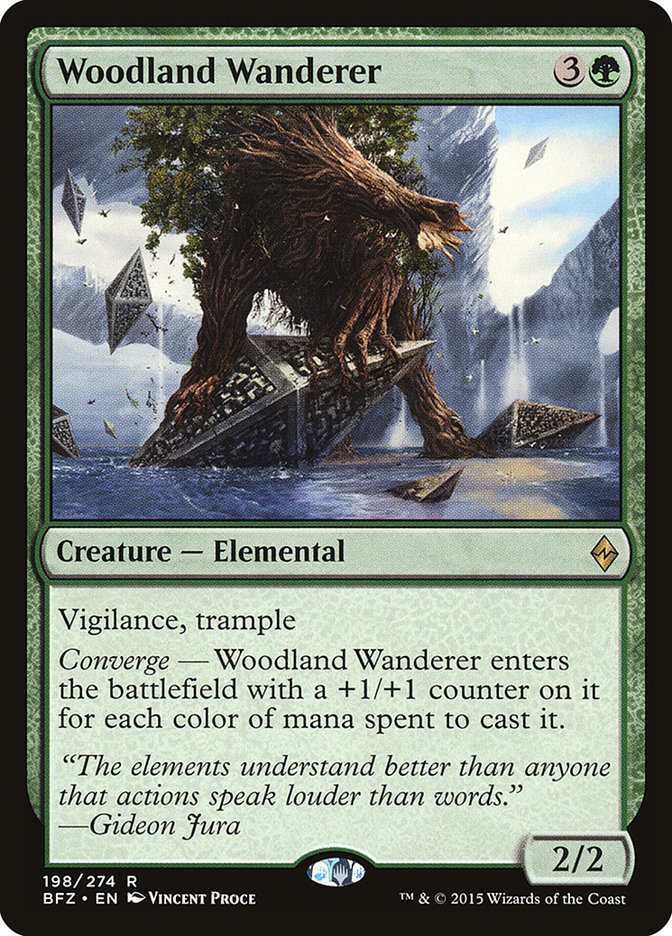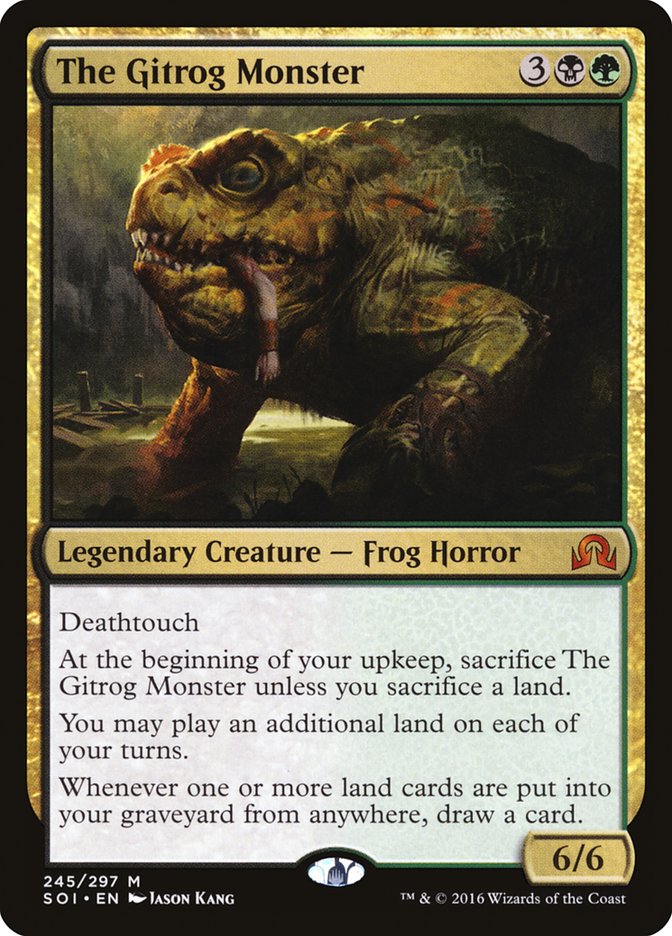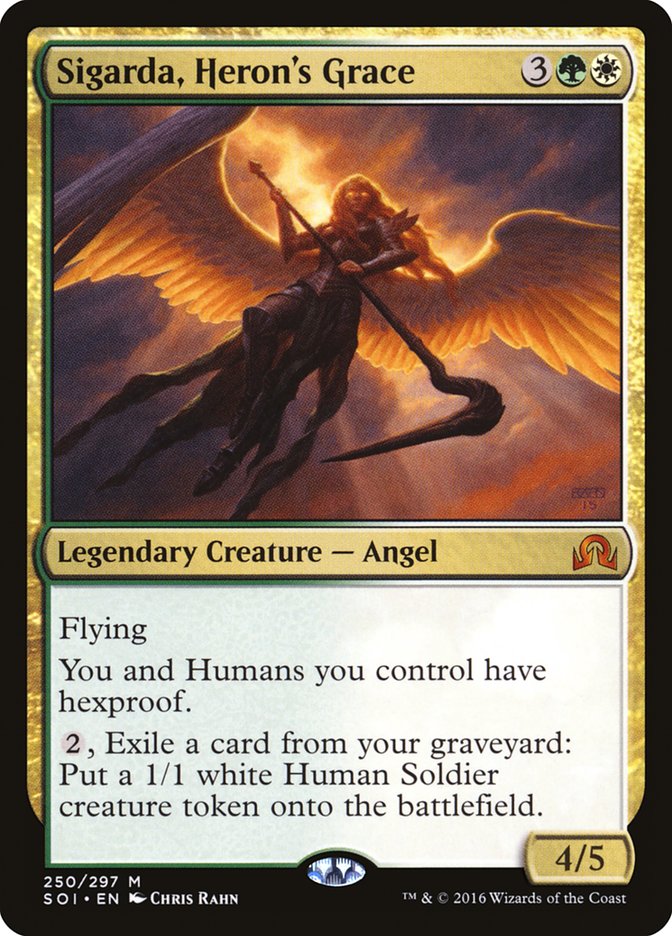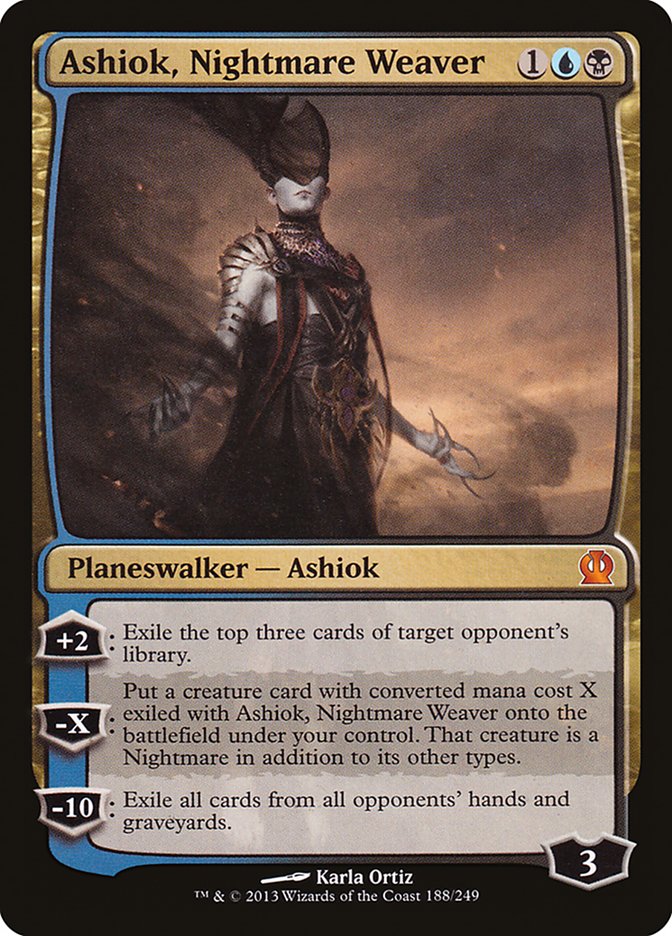There come moments in Magic where the mere existence of cards pushes out the desire to play other cards.
These moments happen far more often than many people realize, and they were there at the beginning of the game. One of the best examples is exemplified by this comparison:
I don’t mean to pick on poor Ironroot Treefolk, but it is hard to imagine having much of a chance with your poor Ent if your opponent has a Black Lotus at the ready. The relative power level of the cards is just so wildly out of whack that playing Ironroot Treefolk in such a world is foolhardy, no matter what the reason.
If we move forward ever so barely in time, into actual decks, it becomes even more clear. Take the very first Pro Tour; this deck was widely considered the best deck of the first Pro Tour, though it would get second place at that event almost 21 years ago:
Creatures (14)
- 1 Serra Angel
- 2 Llanowar Elves
- 4 Erhnam Djinn
- 2 Fyndhorn Elves
- 2 Spectral Bears
- 1 Autumn Willow
- 2 Order of Leitbur
Lands (22)
Spells (24)

The deck construction rules were a little odd at the time, requiring a minimum of five cards from each legal set. That constraint aside, two important cards to look at here are one of the namesakes of the deck and a supporting friend to that card:
Anything you wanted to do in the format had to reckon with the fact that you were going to be playing in a world where your very mana’s reliability was suspect. Four Strip Mine is an insanely scary thing to deal with, especially when you consider how harsh mulligans were at the time (in most cases, you didn’t even get the option to do them). Add Armageddon to the mix, and any big-mana strategy you might want to consider was simply out of the question.
Fast forward a few years, and there was another card hogging the reality of what you could choose to play.
At the time that Flametongue Kavu was legal in Standard, the rules were very simple:
If you want to play a creature, it must either be cheaper than FTK, survive FTK, or do something relevant before it dies to FTK.
There were numerous great creatures that came out in the time when Flametongue Kavu was legal, but almost none of them saw any play because of FTK. What the card did was mold the entirety of the environment in its image.
Now we’re dealing with the aftermath of a sort of “FTK” – a creature that was hogging out a whole slew of creatures – with that effect underscored by an entirely new card in Aether Revolt.
Do you think you know what that format hog was?
Nope. That’s not it. As powerful as Emrakul, the Promised End was, it didn’t warp the creatures people would select so much as entirely warp the universe of Standard.
It’s this little creature:
The power of Reflector Mage was only in effect when there was a powerful and popular deck that could use Reflector Mage. Or, in other words, nearly the entirety of the time Reflector Mage was legal, it was doing its work. Here was the rule it enforced on all creatures:
If you want to play a creature, it must either not cost more than Reflector Mage or be able to have an effect on the game before it gets bounced.
If you think about what this means, there are numerous cards fundamentally hurt by this. It isn’t good enough to be a great, efficient four-casting-cost creature. Unless you have an ability that triggers upon entering the battlefield, have flash, or have haste, you have to be pretty damned incredible to make the cut.
Even if the cards have a good “enters” trigger, there is still a great possibility that it just isn’t going to be good enough because of the wasted time. A card like Kalitas, Traitor of Ghet has definitely seen some play in main decks for the entirety of its lifespan, but it was often a harder card to justify, despite how powerful it was, because Reflector Mage games could just end up causing tempo swings that you might not be able to recover from.
There were many other incredibly good cards that couldn’t make it.
Take this one from a recent PT Top 8 that you’ve probably forgotten about:
On its face, this is a card that should have seen far more play, but it was forced out by the power of Reflector Mage, at least in part. Here is the Top 8 deck playing Niblis of Frost:
Creatures (1)
Lands (24)
Spells (35)

While I’m not suggesting that we’re going to be seeing a revolution in Niblis of Frost decks in the new post-Reflector Mage era, I do think that we’re going to see the opening up of a whole slew of card possibilities.
Nearly all of these choices are more expensive cards – cards that cost four or more. This is even more encouraged by a new Aether Revolt card.
Where Reflector Mage was actively suppressing large creatures, Fatal Push is going to be a check on the cheap creatures, particularly the very cheap ones. Four-casting-cost cards are going to get a bit of a special knock on the head because, despite being more reasonable to play on one hand, on the other hand, it’s really painful to spend four mana to make a play, only to have someone knock it down for one mana.
Even so, it is more difficult to Fatal Push a four-drop at will. While Evolving Wilds and Clues are an effective means to get Fatal Push to work on a four-drop, one does run out of these cards, particularly if there are enough three-drops in the deck to sap out both the Fatal Push and the Revolt enabler that got the kill in.
Five-drops are opened completely up in a way that they weren’t before. Where before, you would see Archangel Avacyn or Verdurous Gearhulk, simply because of the powerful effect that they’d have for entering the battlefield in the first place, out of range of a Fatal Push and no longer having to contend with Reflector Mage, the world is back in reach.
Let’s go over a smattering of the cards that get a new life in this brave new world.
White
While absolutely killable by a Fatal Push, this card is still an utter monster because of its three keyword abilities. Even being a little more playable brings this card back into the realm of serious threat, particularly if it is in a deck that can build Brisela, Voice of Nightmares
Yes, this is an insanely expensive card, but it is also much more realistic as a defensive measure if you aren’t going to see it merely bounced back to hand. It is still as constrained as ever by its expensive cost, just in general, but only counterspells really keep Bruna from doing the work she does.
Speaking of Brisela, Thalia’s Lancers definitely gets a big bump, being large enough that it is difficult to kill, having a relevant defensive ability, and being able to find other relevant cards to help the cause. Aside from monstrous Eldrazi Angels, there are now a ton of powerful legendary cards for Thalia’s Lancers to choose from, including new goodies like Oath of Ajani.
Blue
Even dead to Fatal Push, this card is powerful enough to think about seriously now that it won’t just be bounced away. For a minimal cost, you can not only be effectively defensive, but can quickly turn things around on offense. In many ways, it reminds me of another card that as freed up…
Docent of Perfection puts down an incredibly fast clock on an opponent. This card was particularly hurt by the tempo swings from a Reflector Mage because usually it couldn’t create a Wizard before popping back to hand. While obviously still just as dead to many removal spells, this card was powerful enough warrant regular looks during playtesting before, and ultimately was only just short of making many a deck.
Black
Just out of range of Grasp of Darkness and double Shock, able to march into a 4/4 flier, Mindwrack Demon is a hard critter to kill. This card was seeing a little bit of play despite its weakness to Reflector Mage before, so look for it to really get a huge bump.
Where this deck was marginally worth thinking about before, its value certainly goes up now, particularly in a world where attacking into six open mana can be scary – menace goes a long way right now. While still obviously expensive, there are fewer cards that can punish it now.
Red
This card was definitely not good enough before. While a formidable size, doing nothing when it came into play was simply too much of a liability if it could be bounced. Now, though, this card could see use in limited capacity by red-based decks looking for a bit extra to do against planeswalkers, and just in a controlling capacity in general.
This card becomes a lot more frightening when so few cards get it off the table. Less on the bubble than Noxious Gearhulk, Combustible Gearhulk moves from the far fringe to a card worth thinking about.
Green
Like the other Gearhulks, this card was reasonable before but just becomes more so. Other than Torrential Gearhulk, this was the card that was probably seeing the most play before. It can immediately have a powerful effect, but the power of a solitary Verdurous Gearhulk is much more reasonable in the new world.
Previously seeing a bit of fringe play in Ramp decks a few seasons back, like Thalia’s Lancers, this card brings an immediate return and was only barely push out of contention as a reasonable choice by the old metagame. I wouldn’t at all be surprised to see Ramp come back with this card in tow.
Gold
A gold card masquerading as green, Woodland Wanderer was still powerful enough to see play before, albeit typically beside Reflector Mage cards of its own, so it is likely to see a bit more play now. Despite the fact that Fatal Push kills it, Wanderer typically sits with a fair number of aggressive creatures and so is more likely to be able to stay in play because of the lightning rods it runs with.
This card is powerful enough that it managed to see play in winning decks in several Pro Tours and Grand Prix, but its number one enemy was always Reflector Mage. Like practically all of the creatures on this list, while still killed by cards like Murder, Ruinous Path, and Declaration in Stone, in a deck that is going to run The Gitrog Monster, forcing the opponent into a grind-war is exactly what it hopes to do, so it is likely in a fine position.
Previously a reasonable weapon against B/G Delirium, this card has new life: out of reach of practically all removal, able to stop the most popular fliers, and supplying a full tank of gas in a long game.
Denouement
There are certainly more things that are going to affect creature selection than just Reflector Mage and Fatal Push, but those two factors are absolutely huge. If we’re going to think about all of the new constraints, it might look something like this:
The reason Reflector Mage and Fatal Push interest me is that, together, it seems to me that there is more call for more expensive creatures than we’ve seen in some time. This makes for an intriguing time, where the value of things we’ve been accustomed to thinking of as weak can become strong.
This is something I find especially intriguing because of my own history. There was a card that I thought was particularly underwhelming and not worthy of play in control decks because the other options were simply so much better. Then, of course, things changed, and so did my opinion.
When it comes to card valuation, during times of change it is especially good to take the flexible view.
As we look to the first big exploration of the format this weekend at the SCG Tour in Columbus, I expect a few previously rarely seen creatures to have their breakout moment, and I’m glad for it.
Goodbye, Reflector Mage. You’ll see no tears from me at your departure.



